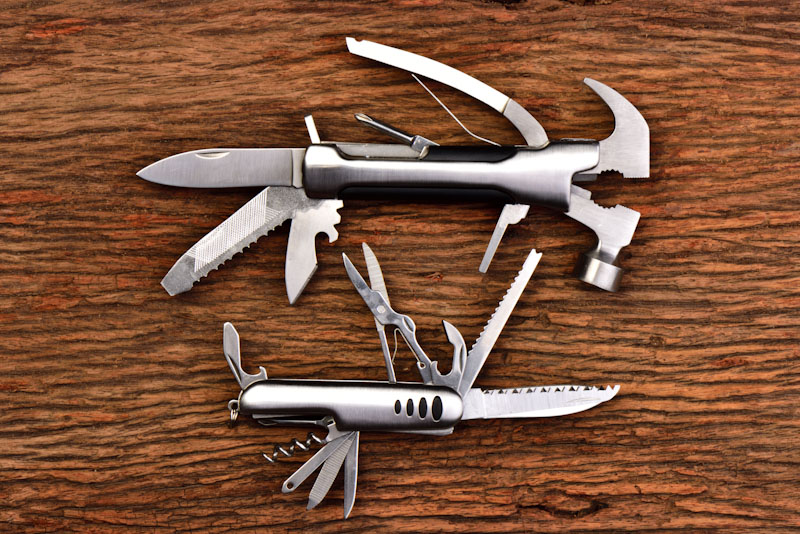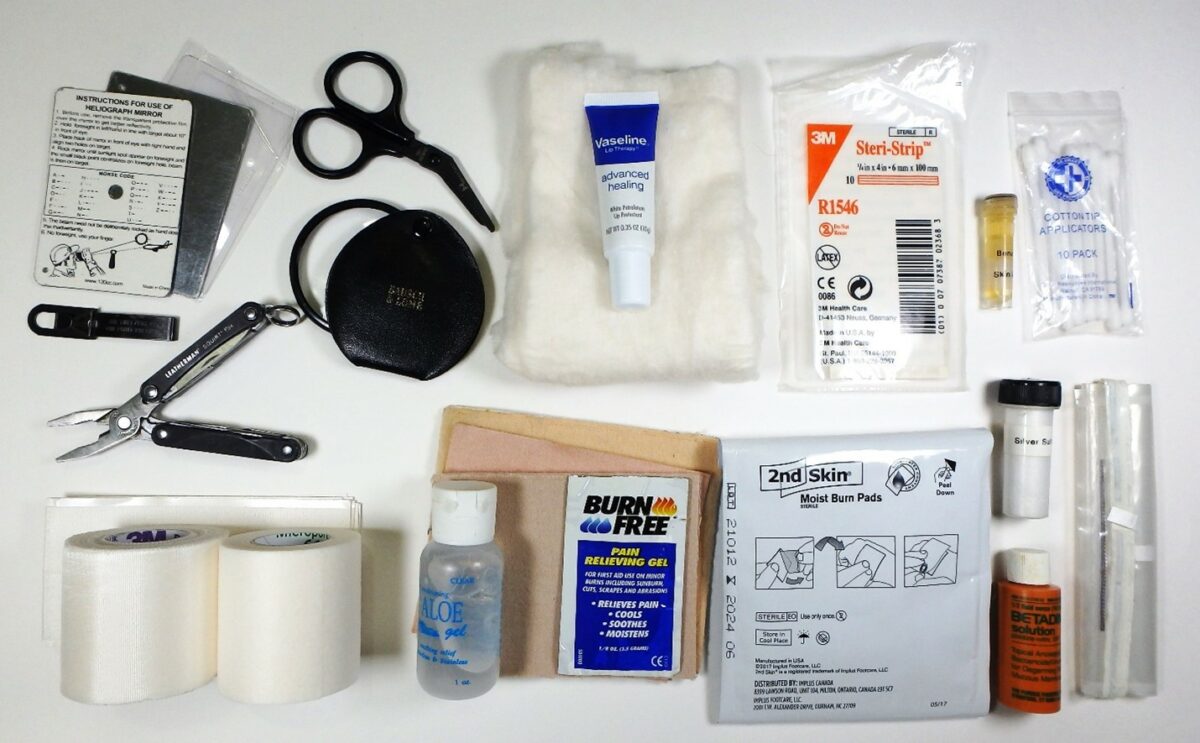Let me begin with a little known factoid: America land of the free, home of the cat owners, has an estimated population of almost 100 million cats (95.6 mil officially but they’re not all bagged and tagged, obviously); there are more cats than dogs in the US by a long shot!
If you’re the happy person that belongs to one of these cats, have you ever wondered what would happen to your cat if a natural disaster strikes? As a cat owner myself, I wondered about the hows and whens and I decided to make a plan and prepare a disaster kit for my cat. It may sound a little bit silly but I think my cat will really appreciate it when the time comes to get out of Dodge.
First things first. Cats are very nice animals and in my opinion, they make perfect pets. But in case shtf, they are still animals and they will react out of sheer fear and terror. They’ll follow their instincts which say “run for your life!!!!” They will disappear to their favorite hiding place 90% of the time, so knowing your cat’s hiding places is crucial.
If you’ve ever tried, you probably know that’s almost impossible to train a cat to perform even basic tasks unless it wants to do it. Unlike dogs, cats are often difficult to train, so forget about teaching your cat too many disaster surviving tricks. It’s gonna be an epic fail in the end and you’ll waste your time.
Truth be told, cats really do seem to have that sixth sense and they are capable of predicting future nasty events like tsunamis or earthquakes, but usually you’ll discover its effectiveness only in the aftermath of the disaster. Cats are obviously totally incapable of leaving notes/memos describing future disasters, and since their behavior is often unexplainably bizarre, there’s no way to interpret what’s causing it until it’s too late..
Basically, in case of a disaster, “No cat left behind” is the name of the game if you want your precious kitty to survive the apocalypse. Even if you leave water and food supplies for your cat, you’ll never know how long it will take you to return home or what your cat will be doing among the ruins. A disaster can/will make your present friendly environment a Hellhole (think Katrina, Fukushima etc.) that’s unsafe for your cat to even walk through.
If you absolutely have to leave your cat, you should leave enough food and water to last for at least 2 weeks, using “safe” bowls that can’t be tipped over.
The most important thing to do is to prepare an evacuation plan and a cat survival kit in advance; that’s what I did and I think it’s the safest bet.
Keeping in mind that disasters strike without prior warning, start preparing now and don’t forget to:
– Make sure your cat is wearing a collar and a tag containing id/contact information
– Register and microchip your cat. This way it will be easier to get reunited with your furry friend in case you get separated by accident.
– Get a cat carrier. You don’t want to run with a cat in a bag in case shtf! Familiarize your cat with its new mobile home. In case you’ll need to use it, the cat must not be terrorized by the carrier and you must be able to catch your cat easily in case of an emergency. Practice makes perfect. I know I’m being optimistic because cats are very difficult to catch if they’re scared. Just do your best and plan ahead. If you stay calm, your cat will be more likely to remain calm, too.
– If disaster strikes, never leave your cat roaming outside; it’s usually much safer inside. Always try to remain calm and comfort your cat.
– Have a “mental” map with the locations of pet friendly motels/animal boarding facilities in your area
Now, let’s make a short checklist with disaster supplies for your cat survival kit:
– Canned foods and water (at least a 2 week supply, if possible)
– Paper towels, trash bags, bleach for eventual “accidents”
– Medications refills (if necessary) for at least 2 weeks
– Medical records (vaccinations certificates, prescriptions, microchip number, etc.)
– A solid leash
– A comfy carrier/blankets/towels
– Your cat’s favorite toys
– “Missing pet flyers” that contain a current photo of your cat, its age, sex etc. and your contact info (cell phone).
– Proof of ownership for your cat, registration information or adoption papers
If you can think of anything that we missed, please tell us about it in the comments section below. Together we can keep our furry friends safe and sound.
This article has been written by Chris Black for Survivopedia.









RAPTOR555 | July 13, 2014
|
It is absolutele true that cats can predict disasters; at least earthquakes. In 1969 I moved to California from Pennsylvania in 1969 and a friend I worked with gave me a kitten. I was lying on the floor in my temporary studio apartment watching TV with my kitten on my chest and, all of a sudden, my kitten sank all of it’s claws into me. I immediately brushed it off my bloody chest and within 1 minute an earthquake struck. It didn’t strike me at the time but when I thought about it later, I figured it out that the kitten knew it was coming.
Edith | July 13, 2014
|
Cats ARE pretty intuitive. I used to have a cat that would all of a sudden walk to the front door and stare at it whenever I was on my way home from somewhere. My husband told me that the cat did this 10 minutes before I drove into the driveway. And she did it EVERY time. It didn’t matter if I was coming back from a job that I’d been at for 8 hours, returning from a shopping trip or a quick trip to the bank. He said he could time my arrival by the cat’s flawless ability to go to the front door and stare at it.
Cats are also quite trainable. I now have 3 cats (the aforementioned has passed on) who all come when I call their names. I’ve had a couple dozen cats over the past 55 years, and they always act like dogs (I’ve never owned a dog). They come when called by name. They understand a limited number of verbal commands: Stop. Stay. Come. No. Timeout. The latter is extremely effective.
I even have a cat who knows when he’s done something wrong and puts himself in the timeout spot and stays there until he starts acting nice, again. Totally up to him how long he stays there, and he knows it. If he doesn’t give himself a timeout automatically, all I have to do is point to the spot, and he goes there. The timeout place is a 3-sided “house” on the third level of our 7-ft-tall scratching post.
I have a large supply of dry and canned catfood for the kitties in case disaster strikes and I can’t get to a store or receive mailordered goods. I have bowls and utensils that don’t have to be washed. Just toss them. It’s one less thing to wash. If we have to bugout, then we use washable bowls to lighten our load. We have the Life Straw for people to get safe water, but we have bottled water for the cats since there’s no Life Straw for animals. I know they can drink dirtier water than people, but there’s still the possibility of some illnesses from bad water.
Pingback:» Prepping with Cats | July 13, 2014
|
wanderer | July 13, 2014
|
ok, you had me going there! what a title for a post. I don’t care how many cats there are i’ll eat something else. lol
mickieB | November 21, 2015
|
~roflmao~ so I’m a cat lady in training and I’m going to absolutely HAVE to get to that point of hunger that I’ll eat anything, and I’ll hit the insects before I hit the cats….heck, I’ll probably hit dog before cat (but never say never). Even so, I do have a little used bookstore book from the 70s called Eat Cheap! that I’ve kept for years simply because it has has instructions on how to skin & prepare cat and dog “like the Chinese”. My Ukrainian and Irish immigrant families have mythologies (per se) about how all the cats and dogs disappeared during the famines before coming to this country. I mean, hey, if you die in your bunker with your cat, it’s gonna eat you…it happens. In NYC there’s always stories of old people dying and being eaten by their poor cats before anyone realizes they’re dead and rescues the cats.
carmela tyrrell | July 13, 2014
|
If you are planning to go across state lines, there are vaccination requirements that vary state by state. So – even if you are passing through any given state, it would be good to check the Department of Agriculture websites for those states to see what your animals need. Last thing you want is to get pulled over by a bluehead or something because they see a pet carrier and no vaccine papers or certificate of health from a vet.
Also – from my own experience travelling kitties large and small – keep a blanket on hand that you can roll them up in. Sometimes wrapping them up in a towel also makes it easier to get them in a carrier.
Harnesses are easier on cats and make it easier to put them on a lunge line so they won’t run off to get back home once you reach your destination. They also have nice small open mouth muzzles if kitty is a biter or you need to be around a lot of people or have to let them out of the carrier.
The other thing is even outside of a total collapse – if it is something non-permanent like a bad hurricane, etc – you may wind up going to a FEMA camp or some other shelter. Not all shelters in your area or where you are going will accept pets. So – my recommendation – if you have a medical condition – go to your doctor and have your pet declared a service animal. It only takes a certified letter from the doctor that you keep with you; and then just get a vest with service animal on it, etc. By federal law, any animal can be a service animal, and they do not need extraordinary training. If they give you affection and comfort which helps you deal with an illness (example if you have anxiety, panic, etc) then your cat qualifies. Once your pet is declared a service animal, it is eligible for shelter regardless of whether pets are allowed or not. All you have to do from there is provide adequate restraint and take care of it.
Hope this helps.
Erin Owl | February 27, 2020
|
Carmella Tyrrell – Incorrect information about “Service Animals”. Only Dogs and miniature horses can be “Service Animals”. Service animals are animals TRAINED to perform at least TWO TASKS that ammeliorate or assist with a person’s disability. A cat is NOT a service animal. A cat CAN BE an “emotional support animal”. Service animals are covered by Federal Law and are allowed everywhere the public is allowed to go. Emotional Support animals (NOT THERAPY ANIMALS) assist with a psychiatric disability – anxiety, comfort, lonelies, social isolation, etc – and have NO PUBLIC RIGHTS. They do however have exemptions from “Pet deposits” in rental properties. AND they are “allowed” and by extention “required” for your disability in your “habitation”. Since a “FEMA camp” may be your “habitation” or a “Shelter” may be your “habitation” – then the cat would be allowed THERE. But it must be CONTAINED. If you are in an open gym, you will need a BIG DOG CRATE that will hold both cat and some sized litter box. The cat CANNOT be “loose” on a leash and has NO PUBLIC RIGHTS because it cannot be “trained” to perform or “assist” with anything – it can only give “emotional support” by “doing nothing” but “being there”. .
HOPE THIS INFORMATION HELPS YOU ALL PREPARE.
Pingback:Prepper News Watch for July 14, 2014 | The Preparedness Podcast | July 14, 2014
|
Valerie | July 16, 2014
|
Remember that cats are obligate carnivores. Dogs can survive on meat and rice, cats do not need much vegetable matter. Cat’s Achilles heel is the need for Taurine. Cats need about 25 mg per day. Buy a bottle of Taurine supplements. If you have to feed your cats something other than cat food, add taurine. Most capsules are 500-1000 mg, so grind it to a powder and a small dash. Cat’s systems take what they need and excrete the remainder, so within reason you don’t need to be concerned about overdosing.
Make a cat specific first aid kit with Taurine, de-wormer, flea/tick drops and anti-biotic ointment. Depending on your cat, you may wish to include hair ball medicine (some cats over groom as response to stress), and drops to discourage gnawing on bandages. Of course your vet may be able to give you some really good ideas tailored to your pet.
Hayden | July 25, 2014
|
My precious Theodore loves his silk plush marlin toy, i couldn’t imagine putting that away in his doomsday preparedness kit. He would be devastated. He lost it one evening while i was away for the night with my recent fling with the seamstress from Jo-ann Fabrics. Needless to say, I returned to my quiet apartment to find the place destroyed. The throw-pillows stuffing was cast astray from its casing and the toilet paper stretched from wall to wall. I panicked and quickly reached for the phone to call 911. Out of the corner of my eye, a large black blur of fur poked out for the pillow stuffing and let out a gentle cry. i was in disbelief that he had destroyed my place. He jumped on the counter to greet me and immediately began pawing at the couch again and i reached under to find the plush marlin and began cleaning up. What a cheeky little fellow my lovely Theodore. A true blessing. So, I guess my question is: when the end of days does occur, and it is time for me and Theodore to leave where we are, will it still be safe for him to ride in the backseat of my car?
Pingback:How to Prepare Your Cat for Survival | January 17, 2015
|
V.F. | February 16, 2015
|
First I would like to recommend harnesses rather then collars.Second I would not consider a boarding facility,pet motel,or even your vet.Reason being the people work there will most likely be more concerned about their families and not your pet and they would be abandoned and trapped.Keep them with you.Also you should consider a restraint like a pillow case with a zipper sewn to the bottom and a drawstring at the top.You can either make one or purchase one.Catnip would be something else I would highly recommend as well.Ear mite medication I also suggest highly.L-Lysine is a good thing to have on hand just sprinkle 250mg for kittens on their food twice a day 500mg for adult cats twice a day.It,s really good for their immune system.It is also good for fighting the common cold in people as well. Clavamox is a real good antibiotic it can be purchased online without a prescription.Chicken Baby food is good for cats and kittens who are sick and are not eating.Just mix with some water and put it in a syringe or dropper.Another thing is if you can purchase some lactate ringers. Simply put, you draw up Lactated Ringers IV solution into a syringe, gently inject the needle just under the skin between the shoulder blades and slowly inject the solution until you form a small ball of solution under the skin. This looks horrible at first, but rest assured your kitty’s body will immediately begin to absorb this IV fluid and within mere minutes, the ball of solution will disappear!
You can purchase Lactated Ringers IV solution without a prescription. Cats and dogs both could become dehydrated due to sickness or even stress.I really want to stress to everyone out there whatever may happen do not just leave them behind.Hurricane Katrina is a very good example of why. Over 600,000 animals were killed or left stranded without food,water,ect.My overall concern and fear with SHTF and your pets and mine is the cruel intentions of some people.This I believe will worsen in events to come.I hope and pray it doesn,t play out like that but it most certainly could.Keep them and yourselves safe at all costs.Whatever it takes do it.
M. Sean Williams | March 23, 2015
|
now, after Katrina, and the government (insert tirade here) told people they couldn’t keep their pets, the evac was an unmitigated disaster. when a big storm hit Texas a bit later, and folks were allowed to bring their pets, things went much better … did the (insert cuss words) government learn anything? probably not… thanks, Mr. Bureaucrat, i’ll watch out for my own self. no, Mr. Bureaucrat, you needn’t worry about that little bit of laser light on your centre of mass…
mickieB | November 21, 2015
|
yeah I was in Brooklyn during Hurricane Sandy (and yes, evac zone 50 feet from the Bay). In spite of what the talking heads said, there was only one 300 bed shelter set up in an inaccessible part of Brooklyn with no parking for those who had cars and no trains or buses (and livery cars were booked solid; there are no yellow cabs in most of Brooklyn). They also didn’t take pets. Everyone in my immediate neighborhood who did not evacuate, did so because they were not going to leave their pets behind. But hey, a pile o’ cat is a warm thing in a nor’easter with no electricity or gas boilers working for 9 weeks.
Daryl Coda | May 5, 2015
|
Cool article. Check out my video on how I give my cat daily tactical training:
Clauida S | September 21, 2015
|
I have learned from many years of putting cats in carriers that if you have one that fights you literally tooth and nail to just turn him/her around and put it in backwards. Works every time.
Renee | October 8, 2015
|
Cats tend to claw things when frightened and sometimes they can rip off a nail. If you have a small first aid kit going for your pet make sure to put in some styptic powder to stop the bleeding and if you need to use any, get the kind of gauze tape that sticks to itself rather than having to use tape. That will rip off the fur. Maybe even put in a few baby sized socks to cover the feet to keep them from biting off the gauze. Another thing is put some of their favorite treats in their go bag.
Lacie | April 25, 2019
|
You need something to make the cat throw up in case s/he eats something that can’t be digested. You also need a harness. Most people don’t bother to ever break their cat to a harness. That to me is a mistake. If you need to leave you won’t have much luck with your cat doing a scram while you have the collar they pulled out of. Take the cat with you when you buy the harness and make sure it’s adjustable for variant. As a just in case measure I’ve actually crocheted a harness for my cats in about seven minutes per. Three cats and we had a half hour notice due to severe storms coming and we had to evacuate. The then husband got our stuff I had prepped days before and packed the car. The cats were all in the bathroom. The harness I made was tight on each but had a place to attach a leash. They were also comfortable to them and able to let them breathe.
You also want a pair of summer and a pair of winter boots for them. Yes I’m awareness they have fur…but they’re still able to get frost bite. Blankets are great as are towels tho a pet coat for kitty especially one with little or no fur to keep warm and a hat. Break them to these things while you can so there is no fight when there’s an emergency. The harness goes UNDER the coat.